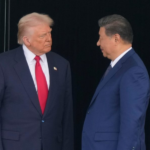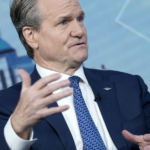COFCO did not immediately respond to Fortune’s request for comment.
Experts with knowledge on the transaction told Reuters that the purchase volume was small, only amounting to 3 cargoes, or shiploads, of soybeans, and that demand for the crop from the U.S. isn’t expected to significantly increase in the near future after recent large purchases from South America.
“So I would expect that the threat of the 100% has gone away, as has the threat of the immediate imposition of the Chinese initiating a worldwide export control regime,” he said.
Bessent declined to give specific details to CBS about the trade agreement, but said soybean farmers will be “extremely happy with this deal for this year and for the coming years,” and provided a positive outlook for U.S. soybean exporters.
“I believe that we have brought the market back into equilibrium, and I believe that the Chinese will be making substantial purchases again,” Bessent said.
“Leverage diplomacy”
Babak Hafezi, adjunct professor internațional business at American University, told Fortune negotiations between China and the U.S. have been marked by “leverage diplomacy.”
“The Chinese understood that they could not renegotiate unless they had leverage, and they used rare-earth minerals as a key lever, bringing the U.S. to the table,” Hafezi said.
After the move in mid-October, negotiations began to move much faster, including the U.S.’ requirement to purchase soybeans that COFCO has not purchased this year, he added.
“This is a quid pro quo in the negotiation process and helps us stabilize relations with China more quickly,” Hafezi said.









